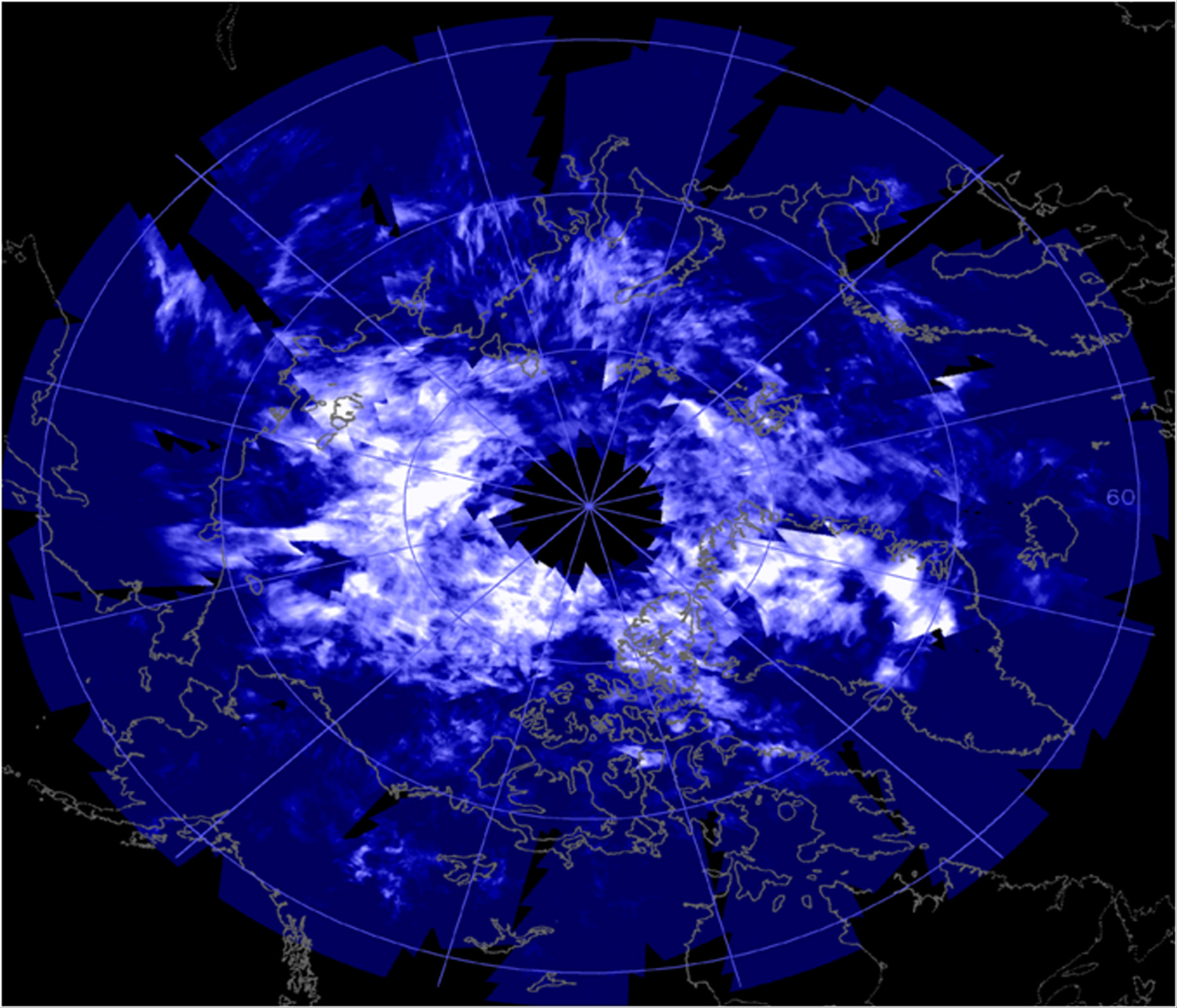Cynthia M. O’Carroll
Goddard Space Flight Center, Greenbelt, Md.
301-286-4647
cynthia.m.ocarroll@nasa.gov
Goddard Release: 09-88

GREENBELT, Md. – NASA’s Aeronomy of Ice in the Mesosphere (AIM) satellite has captured five complete polar seasons of noctilucent (NLC) or “night-shining” clouds with an unprecedented horizontal resolution of 3 miles by 3 miles. Results show that the cloud season turns on and off like a “geophysical light bulb” and they reveal evidence that high altitude mesospheric “weather” may follow similar patterns as our ever-changing weather near the Earth’s surface. These findings were unveiled today at the Fall Meeting of the American Geophysical Union today in San Francisco.
The AIM measurements have provided the first comprehensive global-scale view of the complex life cycle of these clouds, also called Polar Mesospheric Clouds (PMCs), over three entire Northern Hemisphere and two Southern Hemisphere seasons revealing more about their formation, frequency and brightness and why they appear to be occurring at lower latitudes than ever before.
“The AIM findings have altered our previous understanding of why PMCs form and vary,” stated AIM principal investigator Dr. James Russell III of Hampton University in Hampton, Va. “We have captured the brightest clouds ever observed and they display large variations in size and structure signifying a great sensitivity to the environment in which the clouds form. The cloud season abruptly turns on and off going from no clouds to near complete coverage in a matter of days with the reverse pattern occurring at the season end.”
These bright “night-shining” clouds, which form 50 miles above Earth’s surface, are seen by the spacecraft’s instruments, starting in late May and lasting until late August in the north and from late November to late February in the south. The AIM satellite reports daily observations of the clouds at all longitudes and over a broad latitude range extending from 60 to 85 degrees in both hemispheres.
The clouds usually form at high latitudes during the summer of each hemisphere. They are made of ice crystals formed when water vapor condenses onto dust particles in the brutal cold of this region, at temperatures around minus 210 to minus 235 degrees Fahrenheit. They are called “night shining” clouds by observers on the ground because their high altitude allows them to continue reflecting sunlight after the sun has set below the horizon. They form a spectacular silvery blue display visible well into the night time.
Sophisticated multidimensional models have also advanced significantly in the last few years and together with AIM and other space and ground-based data have led to important advances in understanding these unusual and provocative clouds. The satellite data has shown that:
1. Temperature appears to control season onset, variability during the season, and season end. Water vapor is surely important but the role it plays in NLC variability is only now becoming more understood,
2. Large scale planetary waves in the Earth’s upper atmosphere cause NLCs to vary globally, while shorter scale gravity waves cause the clouds to disappear regionally;
3. There is coupling between the summer and winter hemispheres: when temperature changes in the winter hemisphere, NLCs change correspondingly in the opposite hemisphere.
Computer models that include detailed physics of the clouds and couple the upper atmosphere environment where they occur with the lower regions of the atmosphere are being used to study the reasons the NLCs form and the causes for their variability. These models are able to reproduce many of the features found by AIM. Validation of the results using AIM and other data will help determine the underlying causes of the observed changes in NLCs.
The AIM results were produced by Mr. Larry Gordley and Dr. Mark Hervig and the Solar Occultation for Ice Experiment (SOFIE) team, Gats, Inc., Newport News, Va. and Dr. Cora Randall and the Cloud Imaging and Particle Size (CIPS) experiment team, University of Colorado, Laboratory for Atmospheric and Space Physics in Boulder and Dr. Scott Bailey, Va. Tech, Blacksburg, Va.; Modeling results were developed by Dr. Daniel Marsh of the National Center for Atmospheric Research in Boulder, Colorado and Professor Franz-Josef Lübken of the Leibniz-Institute of Atmospheric Physics, Kühlungsborn, Germany.
AIM is a NASA-funded SMall EXplorers (SMEX) mission. NASA’s Goddard Space Flight Center manages the program for the agency’s Science Mission Directorate at NASA Headquarters in Washington. The mission is led by the Principal Investigator from the Center for Atmospheric Sciences at Hampton University in VA. Instruments were built by the Laboratory for Atmospheric and Space Physics (LASP), University of Colorado, Boulder, and the Space Dynamics Laboratory, Utah State University. LASP also manages the AIM mission and controls the satellite. Orbital Sciences Corporation, Dulles, Va., designed, manufactured, and tested the AIM spacecraft, and provided the Pegasus launch vehicle.
For more information about the AIM mission, visit:



























